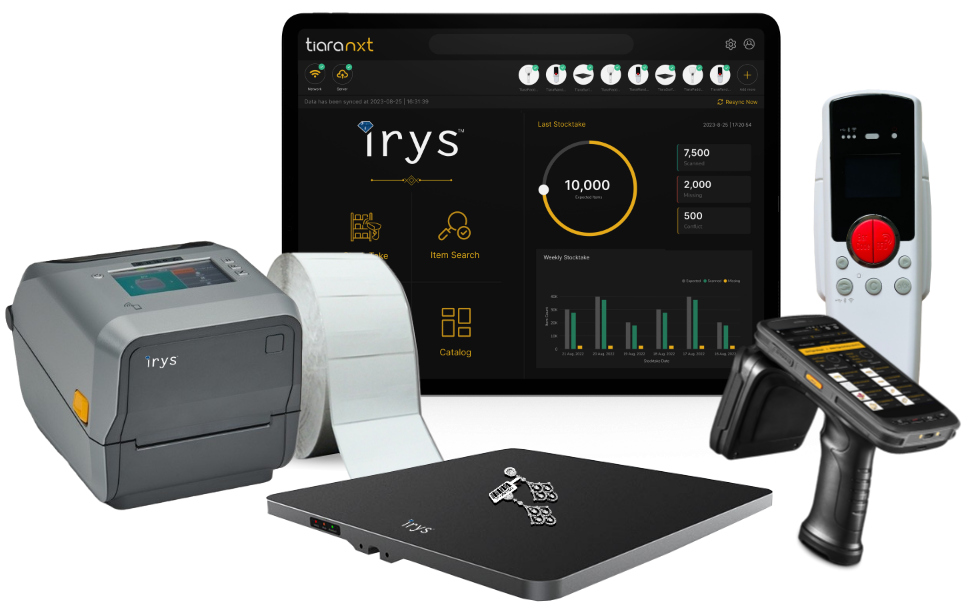
In the jewelry industry, precision, security, and efficiency are non-negotiable. Every piece—whether a diamond ring, gold necklace, or luxury watch—represents high value and demands meticulous handling. Traditional inventory systems often fall short in offering the accuracy and security that modern jewelry businesses require. That’s where RFID (Radio Frequency Identification) technology comes into play.
Solutions like RFID jewelry tags are transforming how jewelry retailers, manufacturers, and wholesalers manage their assets. These tags not only ensure real-time tracking but also streamline operations and enhance loss prevention. Let’s explore how RFID technology is revolutionizing jewelry management and why RFID tags for jewelry are becoming essential for businesses aiming for precision and productivity.
Understanding RFID Jewelry Tags
RFID jewelry tags are small, high-frequency tags designed to identify and track individual jewelry items. These tags carry a unique identification code linked to product data such as weight, design, material, price, and more. When scanned using RFID readers, the tag’s information is instantly transmitted to the inventory management system, eliminating manual errors and delays.
Unlike traditional barcode systems, RFID does not require direct line-of-sight scanning, making it faster and more efficient. With RFID, hundreds of jewelry pieces can be scanned simultaneously, providing real-time updates on stock levels and movement.
How RFID Tags for Jewelry Work
The working principle of RFID tags for jewelry is based on wireless data communication between the tag and the reader.
Tagging Each Item: Every jewelry piece is tagged with a unique RFID label.
Scanning and Reading: RFID readers transmit signals that activate the tags and retrieve data instantly.
Data Synchronization: The collected information is automatically updated in the central inventory management system.
Tracking and Reporting: Businesses can view real-time data on item location, stock count, and movement history.
This automation drastically reduces the time and effort required for audits, inventory checks, and sales management.
Benefits of Using RFID Jewelry Tags
1. Real-Time Inventory Management
Jewelry stores often handle thousands of items that look alike but differ in size, design, or material. With RFID jewelry tags, inventory management becomes automated and accurate. Businesses can track every item in seconds, ensuring no piece goes unaccounted for.
2. Improved Security and Theft Prevention
Theft and loss are major concerns in jewelry retail. RFID technology enhances security by instantly detecting unauthorized movements. If a tagged item leaves the designated area without proper authorization, the system triggers an alert, helping prevent loss.
3. Faster and More Accurate Stock Audits
Manual stock audits can take hours or even days. With RFID scanning, staff can complete full stock counts within minutes. The ability to scan multiple tags at once saves significant time while maintaining 100% accuracy.
4. Enhanced Customer Experience
RFID technology also improves customer experience. Staff can quickly locate a specific item for a client, check availability in real-time, and reduce waiting times during billing. The seamless efficiency builds trust and satisfaction among customers.
5. Seamless Integration with POS Systems
RFID solutions can easily integrate with point-of-sale and ERP systems. This integration ensures automatic updates in pricing, stock, and sales records, minimizing manual data entry and errors.
Applications of RFID in the Jewelry Industry
The use of RFID tags for jewelry extends beyond inventory tracking. Its applications span across different stages of the jewelry business:
1. Manufacturing and Production
Manufacturers can track every item through production stages—from design to final packaging. This ensures transparency and reduces bottlenecks in operations.
2. Retail and Showrooms
Retailers use RFID to monitor displays, secure items, and track sales trends. The ability to locate specific jewelry pieces instantly enhances operational efficiency.
3. Warehousing and Distribution
RFID tags simplify storage and movement tracking, ensuring that the right products reach the right stores without mix-ups.
4. Exhibitions and Trade Shows
Jewelry exhibitions handle vast collections in limited timeframes. RFID makes item setup, tracking, and removal faster and more secure.
Why Jewelry Businesses are Switching to RFID Technology
Traditional methods like barcodes or manual ledgers are no longer sufficient in today’s fast-paced jewelry market. Here’s why businesses are making the shift to RFID jewelry tags:
Speed: Scanning hundreds of items in seconds rather than one by one.
Accuracy: Minimizing human error and ensuring precise tracking.
Security: Detecting unauthorized item movement instantly.
Efficiency: Reducing manual labor and time spent on audits.
Data Management: Maintaining digital records for easier analysis and decision-making.
With these advantages, RFID solutions are proving to be an indispensable tool for jewelry businesses worldwide.
Choosing the Right RFID Jewelry Tags
When selecting RFID tags for jewelry, consider the following factors:
Tag Size and Design: Choose tags that are small and lightweight to ensure they don’t affect the aesthetics of the jewelry.
Material Compatibility: Ensure tags can be attached securely to metals, stones, or packaging without interference.
Read Range: Depending on store layout and operations, choose tags that can be read from the required distance.
Durability: Tags should withstand temperature changes, handling, and cleaning processes.
Integration Capabilities: Ensure compatibility with your existing software and RFID hardware.
The Future of RFID in Jewelry Management
The adoption of RFID in jewelry management is only growing stronger. With advancements in IoT integration, cloud computing, and AI analytics, RFID systems are becoming smarter and more predictive. Future RFID solutions may help jewelers analyze customer buying behavior, optimize stock levels, and even offer personalized recommendations.
Moreover, RFID tags can help verify authenticity and origin, reducing the risk of counterfeit jewelry entering the market. This not only protects brands but also builds customer trust.
Conclusion
RFID technology has revolutionized jewelry inventory management, bringing unmatched efficiency, security, and precision. With tools like RFID jewelry tags and RFID tags for jewelry, businesses can achieve complete visibility and control over their assets.
By investing in RFID solutions, jewelry businesses can minimize losses, improve customer satisfaction, and streamline every stage of their operations—from production to point-of-sale. As the jewelry industry continues to evolve, RFID stands as a key driver of innovation and reliability.